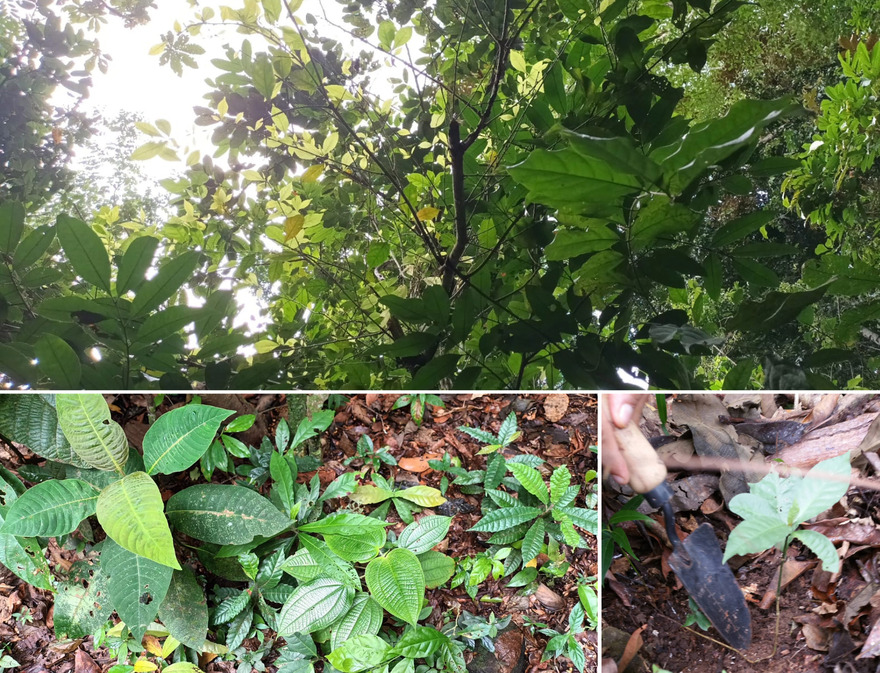Beyond Photosynthesis: Do small trees in the understory of tropical forest gain additional carbon from fungi?
2024-12-11
Researchers at the BayCEER/ University of Bayreuth investigated seedling of woody species in the understory of tropical lowland forests in Panama and showed for the first time that some tropical woody species had a stable isotope signature that is indicative of carbon gaining from fungi. The findings support the idea that carbon can be transferred from fungi to tropical tree seedlings across arbuscular mycorrhizal networks.Common Mycorrhizal Networks connecting fungi and plants – also referred to as ‘Wood Wide Web’ – are highly complex. Despite increasing interest in the ‘Wood Wide Web’ and claims in popular science media, we know very little about whether, how and to what extent carbon is transferred from fungi to tree seedlings and between woody plants via belowground fungal networks. In particular, studies from natural forest ecosystems are rare.
In their recent study, Dr. Franziska Zahn, Blexein Contreras, Prof. Dr. Bettina Engelbrecht and Prof. Dr. Gerhard Gebauer asked the question whether tree seedlings in the understory of tropical forests may gain carbon from mycorrhizal fungi in addition to photosynthesis, that is, whether they are partially mycoheterotrophic.
The research team investigated seedlings of 41 woody plant species in the understory of tropical lowland forests in Central Panama. Natural abundance signatures of stable isotopes were used as indicators of carbon transfer between fungi and plants.
The findings of the study indicate for the first time that seedlings of some tropical woody species may exploit fungi in arbuscular mycorrhizal networks for supplementary carbon that most likely originates from adult trees. This, in turn, may have pervasive implications for understanding the mechanisms of forest regeneration.
Yet, many questions remain to be answered, e.g. about environmental conditions, evolutionary drivers and ecological relevance of such carbon transfers. “I believe we require a diverse set of methods (including both field- and laboratory studies) to further support our initial evidence and to tackle the complexity of Common Mycorrhizal Networks”, says Franziska Zahn, co-author and one of this year’s ‘Excellent Doctoral Researcher Recognition’ Awardees at BayCEER.
The project was funded by the German Research Foundation (DFG) (GE 565/9-1 project number: 405009566).
Original publication:
Stable isotope analysis indicates partial mycoheterotrophy in arbuscular mycorrhizal woody seedlings in tropical forests. Franziska E. Zahn, Blexein Contreras, Bettina M. J. Engelbrecht, Gerhard Gebauer. Functional Ecology 38 (2024).
DOI: https://doi.org/10.1111/1365-2435.14689
Contact:
Dr. Franziska Zahn
Fungal Ecology
(previously at Laboratory for Isotope Biogeochemistry until 2023)
e-mail: franziska.zahn@uni-bayreuth.de
Tel: +49 (0)921 55 2466

One of the study plots in the tropical lowland forests of Central Panama: Dense canopy (top, view from the forest floor) shading the investigated co-occurring seedlings in the understory (bottom). (Credits: Blexein Contreras, Franziska Zahn).

